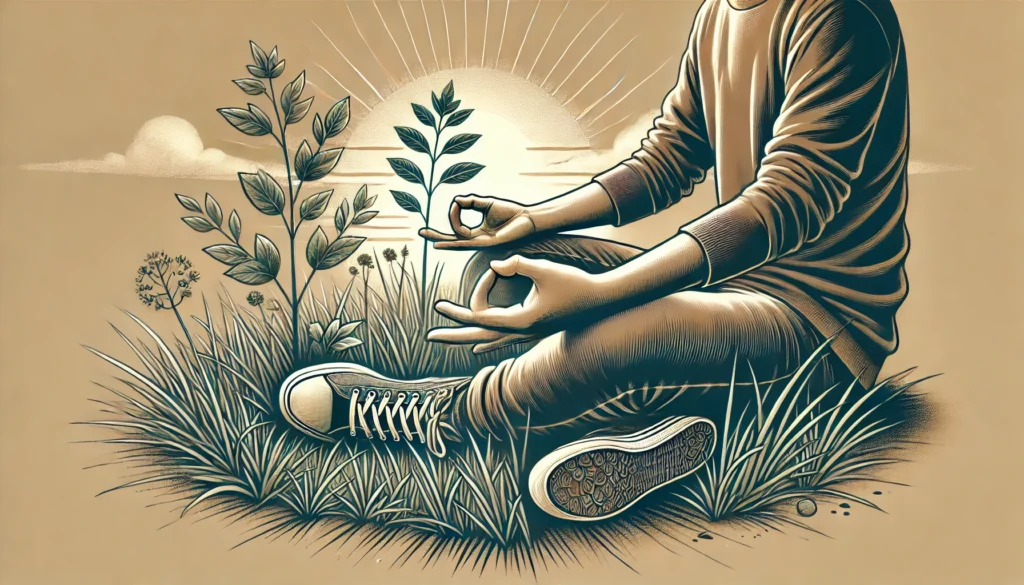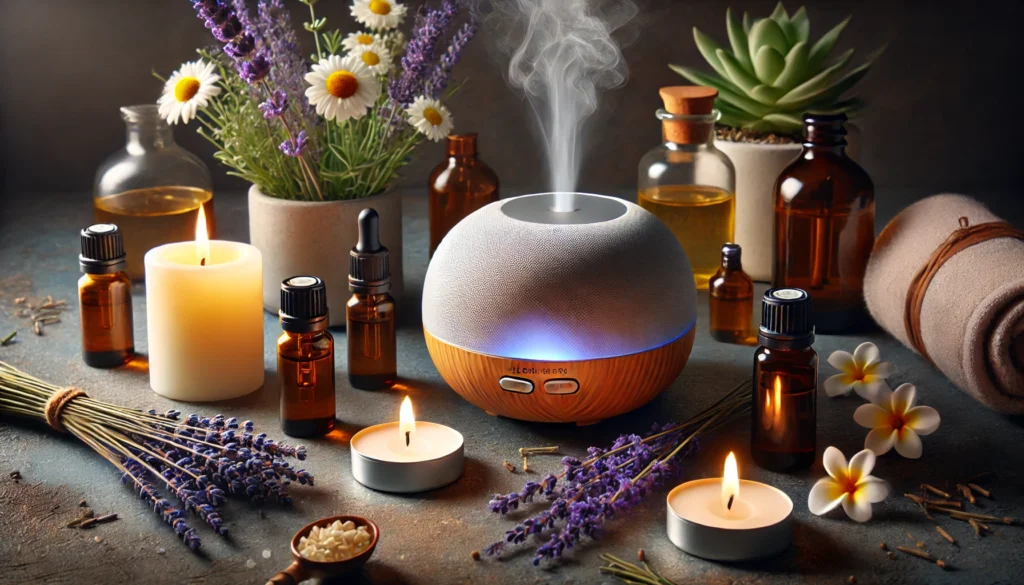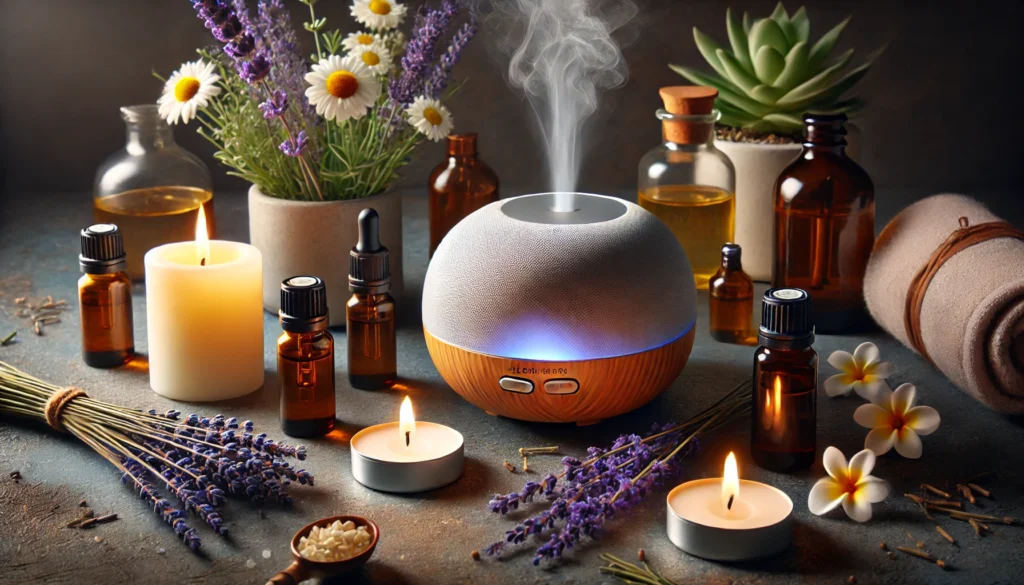Before diving into techniques, it’s important to understand what anxiety is. Anxiety is your body’s natural response to stress, characterized by feelings of tension, worried thoughts, and physical changes like increased blood pressure. While occasional anxiety is normal, chronic anxiety can be debilitating, making it crucial to have effective strategies for quick relief.
You may also like: Natural Supplements for Effective Anxiety Relief

The Nature of Anxiety
Anxiety can manifest in different forms, ranging from mild unease to severe panic attacks. It is important to recognize the symptoms early to prevent escalation. Physiological responses like increased heart rate, sweating, and trembling can accompany anxious thoughts, creating a feedback loop that exacerbates the condition. Understanding these symptoms is the first step in managing anxiety effectively.
Causes and Triggers
Anxiety can be triggered by a myriad of factors, including genetics, brain chemistry, and environmental stressors. Situations such as public speaking, major life changes, or even health concerns can ignite anxiety responses. Identifying personal triggers is essential in developing targeted strategies for anxiety management. Keeping a journal of anxiety triggers can help you understand patterns and predict potential episodes.
Long-term Impacts
If left unmanaged, chronic anxiety can lead to serious health issues such as cardiovascular problems, weakened immune response, and mental health disorders like depression. It can also impair daily functioning, affecting work performance and relationships. Recognizing the potential long-term effects emphasizes the importance of seeking timely intervention and adopting effective coping mechanisms.
Breathing Techniques
Breathing techniques are a cornerstone of anxiety management, offering immediate relief by calming the nervous system. They can be practiced anywhere and are particularly useful in high-stress situations.
Diaphragmatic Breathing
Diaphragmatic breathing, also known as deep breathing, is one of the most effective ways to calm anxiety fast. This technique involves taking slow, deep breaths to activate your parasympathetic nervous system, which promotes relaxation.
- Find a Comfortable Position: Sit or lie down in a comfortable position. Ensure your body is supported to avoid additional physical strain.
- Inhale Deeply: Place one hand on your chest and the other on your belly. Breathe in deeply through your nose, allowing your belly to rise. Feel the air filling your lungs fully, expanding your diaphragm.
- Exhale Slowly: Breathe out slowly through your mouth, feeling your belly lower. Visualize releasing tension with each breath out.
- Repeat: Continue this pattern for a few minutes, focusing on the rise and fall of your belly. Use a soft count to maintain rhythm and prevent your mind from wandering.
Research has shown that diaphragmatic breathing can significantly lower stress hormones, providing instant anxiety relief and improving overall emotional well-being. Practicing regularly can also enhance lung capacity and improve respiratory health.
4-7-8 Breathing
The 4-7-8 breathing technique is another powerful method to ease anxiety quickly. This technique can help you achieve a state of deep relaxation.
- Inhale: Breathe in quietly through your nose for a count of four. Focus on drawing in calmness and clarity.
- Hold: Hold your breath for a count of seven. This pause allows oxygen to circulate through your body, promoting a sense of tranquility.
- Exhale: Exhale completely through your mouth for a count of eight. Imagine expelling anxiety and tension with each breath out.
- Repeat: Repeat the cycle three to four times. With practice, this method can quickly become a go-to technique for stress management in moments of acute anxiety.
Box Breathing
Box breathing is a structured method that promotes calmness and focus.
- Inhale: Breathe in through your nose for a count of four.
- Hold: Hold your breath for a count of four.
- Exhale: Exhale through your mouth for a count of four.
- Hold: Pause after exhaling for another count of four.
- Repeat: This cycle can be repeated several times, creating a ‘box’ pattern that enhances concentration and relaxation.
Box breathing can be particularly beneficial in situations where focus is required, such as before public speaking or during a stressful meeting.
Grounding Techniques
Grounding techniques are mental exercises designed to bring your focus to the present moment, effectively lowering anxiety quickly. They help redirect your thoughts from anxiety-inducing stimuli to a calm and centered state.
5-4-3-2-1 Technique
This popular grounding exercise uses your five senses to shift your focus away from anxiety and back to the present.
- 5 Things You Can See: Look around and become aware of your environment. Notice colors, shapes, and objects you haven’t paid attention to before.
- 4 Things You Can Touch: Notice the texture of objects around you. Feel the ground beneath your feet or the fabric of your clothes.
- 3 Things You Can Hear: Listen for ambient sounds. Pay attention to the quiet hum of electronics or distant conversations.
- 2 Things You Can Smell: Focus on scents in your vicinity. Inhale deeply to identify any faint or strong aromas.
- 1 Thing You Can Taste: Pay attention to the taste in your mouth. This could be the remnants of a recent meal or a sip of water.
Engaging your senses in this way can anchor you to the present, diminishing the power of anxious thoughts. This technique is discreet and can be performed almost anywhere, making it a versatile tool for anxiety management.
Body Scanning
Body scanning helps increase awareness of physical sensations and tension.
- Find a Comfortable Position: Sit or lie down comfortably, ensuring your body is fully supported.
- Focus on Breathing: Start with a few deep breaths to center yourself.
- Scan From Head to Toe: Slowly bring your attention to each part of your body, starting from your head and moving down to your toes. Notice any tension or discomfort.
- Release Tension: As you focus on each body part, consciously relax any tension you find.
This practice can help you identify areas of physical stress linked to anxiety, allowing you to consciously release tension and promote relaxation.
Counting Backwards
Counting backwards from 100 can help distract the mind from anxious thoughts.
- Find a Quiet Space: Sit in a calm environment free from distractions.
- Start Counting: Begin counting backwards from 100 slowly and deliberately.
- Focus on Each Number: Concentrate fully on each number, visualizing it in your mind.
This technique diverts attention from anxiety, creating a mental break from worrisome thoughts. It is particularly useful for those who find it challenging to focus on more abstract grounding techniques.

Physical Activity
Physical activity is an excellent way to reduce anxiety quickly and release anxiety from the body. Exercise increases the production of endorphins, the brain’s feel-good neurotransmitters, which naturally alleviate stress.
Quick Exercises
- Jumping Jacks: Perform a set of jumping jacks to elevate your heart rate and release tension. This simple exercise can be done anywhere and is a quick way to boost energy.
- Running in Place: Run in place for a minute to boost your mood and energy levels. Focus on breathing rhythmically as you move.
- Stretching: Stretch major muscle groups to relieve physical tension. Incorporate stretches for your neck, shoulders, and back to release built-up stress.
These activities promote blood circulation and stimulate neurotransmitter production, resulting in fast anxiety relief. They also serve as a healthy outlet for nervous energy, making them an effective tool for managing anxiety.
Dancing
Dance to your favorite music to lift your spirits and distract your mind.
- Choose Uplifting Music: Select songs that energize and motivate you.
- Dance Freely: Allow your body to move in any way that feels natural. Let the music guide you without worrying about technique.
- Focus on Enjoyment: Concentrate on the joy of movement, letting go of anxious thoughts.
Dancing is not only a physical release but also an emotional one, providing an instant mood boost and a sense of freedom.
Yoga
Incorporating yoga poses can provide both physical and mental benefits.
- Find a Quiet Space: Settle in a peaceful environment where you won’t be disturbed.
- Practice Simple Poses: Start with poses like Child’s Pose, Downward Dog, or Warrior Pose. These poses encourage relaxation and grounding.
- Focus on Breathing: Maintain steady, deep breaths as you move through each pose.
Yoga combines the benefits of physical activity with mindfulness, making it a powerful tool for reducing anxiety. Regular practice can improve flexibility, strength, and mental clarity.
Aromatherapy
Aromatherapy uses essential oils to promote relaxation and well-being. Certain scents can help calm anxiety fast by affecting the limbic system, the brain’s center of emotions.
Recommended Scents
- Lavender: Known for its calming properties, lavender can help lower anxiety. Use it in a diffuser or apply a drop to your pillow for a soothing effect.
- Bergamot: This citrusy scent is uplifting and can reduce anxiety symptoms. It is often used in perfumes and can be blended with other oils for a refreshing aroma.
- Chamomile: Chamomile is soothing and can promote emotional balance. Drinking chamomile tea or using chamomile oil can have a comforting effect.
Methods of Use
- Diffusion: Use an essential oil diffuser to spread calming scents throughout your space.
- Topical Application: Dilute essential oils with a carrier oil and apply to your wrists, temples, or behind your ears.
- Inhalation: Inhale directly from the bottle or place a few drops on a tissue to carry with you.
Incorporating aromatherapy into your daily routine can enhance mood and provide a quick way to manage anxiety. Experiment with different oils to find the scents that work best for you.
Creating a Relaxing Environment
- Use Candles or Incense: Light scented candles or incense sticks to fill your space with calming aromas.
- Incorporate Plants: Add aromatic plants like lavender or mint to your home for natural scent and beauty.
- Soothing Baths: Add a few drops of essential oils to your bath for a relaxing soak.
These practices can transform your environment into a tranquil haven, reducing anxiety and promoting relaxation.
Mindfulness and Meditation
Mindfulness and meditation are effective practices for reducing anxiety quickly by centering your thoughts and promoting a sense of peace. They encourage a state of awareness and acceptance, helping you respond to stress more effectively.
Quick Mindfulness Exercise
- Find a Quiet Space: Sit comfortably in a quiet place. Ensure you are free from distractions.
- Focus on Breathing: Close your eyes and concentrate on your breathing. Notice the natural rhythm of your breath without trying to change it.
- Acknowledge Thoughts: Allow thoughts to pass without judgment. Recognize them as temporary and let them go.
- Return to Breath: Gently bring your focus back to your breath whenever your mind wanders.
Practicing mindfulness regularly can help make anxiety go away fast by improving emotional regulation and decreasing stress. It encourages a non-reactive relationship with thoughts, reducing their power over your emotions.
Guided Meditation
Guided meditations can be an effective way to practice mindfulness with support.
- Choose a Meditation: Select a guided meditation that suits your needs, focusing on relaxation, stress relief, or emotional balance.
- Find a Comfortable Position: Sit or lie down in a comfortable space where you won’t be disturbed.
- Follow the Guidance: Listen to the instructions, allowing the guide to lead your practice.
Using apps or online resources can provide a wide variety of meditations tailored to different needs, making it easy to incorporate this practice into your routine.
Visualization Techniques
Visualization involves creating mental images to promote relaxation and achieve a sense of calm.
- Create a Peaceful Image: Visualize a place where you feel completely at peace, such as a beach, forest, or garden.
- Engage the Senses: Imagine the sights, sounds, and scents of this place, making the visualization as vivid as possible.
- Return to This Image: Use this mental image whenever you feel anxious to quickly shift your mindset.
Visualization can be a powerful tool for managing stress, providing a mental escape from anxiety-inducing situations and fostering a sense of tranquility.

Conclusion
Understanding how to get rid of anxiety immediately involves a blend of approaches that target both the mind and body. By incorporating breathing exercises, grounding techniques, physical activity, aromatherapy, and mindfulness into your routine, you can achieve quick anxiety relief.
These strategies not only provide instant relief but also empower you to manage anxiety more effectively over time. Remember, while these techniques offer fast relief, it’s important to address chronic anxiety with professional support if needed.
By adopting these holistic and scientifically-backed methods, you can ease anxiety fast and enhance your overall sense of well-being. Consistent practice will build resilience, equipping you with the tools to face life’s challenges with greater confidence and calm.
Further Reading:
How to Stop Feeling Anxious Right Now
10 Natural Ways to Reduce Anxiety
Meditation: A simple, fast way to reduce stress
Important Note: The information contained in this article is for general informational purposes only, and should not be construed as health or medical advice, nor is it intended to diagnose, prevent, treat, or cure any disease or health condition. Before embarking on any diet, fitness regimen, or program of nutritional supplementation, it is advisable to consult your healthcare professional in order to determine its safety and probable efficacy in terms of your individual state of health.
Regarding Nutritional Supplements Or Other Non-Prescription Health Products: If any nutritional supplements or other non-prescription health products are mentioned in the foregoing article, any claims or statements made about them have not been evaluated by the U.S. Food and Drug Administration, and such nutritional supplements or other health products are not intended to diagnose, treat, cure, or prevent any disease.


